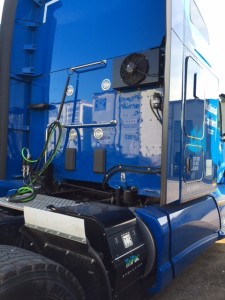Driver Comfort and Fuel Savings – Auxiliary Power Units
In an ongoing effort to increase driver comfort, lower fuel consumption, and reduce carbon emissions, National Carriers continues to invest in auxiliary power units for each of our company tractors. Drivers want to be comfortable while away from home. National Carriers wants to spend as little as possible on fuel so they can pay drivers the maximum amount possible. With those goals in mind, auxiliary power units are a key component in making sure everyone gets what they want and need to be successful
Current Kenworth T680 tractors are equipped with TriPac Evolution units. These units require minimum service and have proven to be durable and reliable. When service is required it can be done at a National Carriers shop or on the road at a Thermo King dealer. It is estimated that these units could save over 2,000 gallons of fuel per unit over a year’s time. With over 400 company trucks, the projected annual savings is over $800,000 in fuel costs. With these reduced fuel costs more money will be available for future driver pay increases.
Lex Mendenhall, Director of Operations for the refrigerated division stated, “Driver comfort and operational savings are the driving force behind our APU investments. Idling is both cost intensive and counterproductive to protecting our environment. Reducing engine noise while our drivers rest insures a more tranquil slumber. A better rested driver is a safer, more productive driver. Our investment in the auxiliary units makes sense from several viewpoints.”
A new brand of auxiliary unit is about to be introduced into the fleet for possible future installations. Idle Smart units will be installed on a test group of National Carrier trucks during the fall of 2017. These units promise to offer advanced features such as Battery Protect™ which allows fleets to monitor batteries and run the engine for a desired amount of time when voltages get low, avoiding dead batteries. With Cold Start Guard™, fleets have the ability to have their trucks start at a specific coolant temperature and run until the desired engine coolant temperature is reached. Of course, drivers will set the inside temperature to the warmth or coolness that meets their comfort needs.